Toronto, Ontario, Canada
Architect: Willie Park Jr. (1920)
6,790 Yards, Par-72
Slope/Rating: 73.3/135
My Quick Review: One of Ontario's 20 best, but it could be great with some selective tree removal and additional fairway width
I think the discussion of Weston has to begin with what Weston used to look like. Though it is near impossible to see today, the Weston Golf Club once was treeless. Consider the below aerials of the 1st, 8th, 9th, 10th and 18th holes. The first aerial is from 1947, the second from 2012. Those familiar with the course with an appreciation of the land on which these holes lay, use your imagination to understand the strategy of these holes without trees. How does the tilt of the fairway impact play? What about the open green fronts? How about the slope of the green?
For mine, the 9th and 18th holes, while still difficult holes today, were once GREAT holes.


For those interested in history, Weston was the site of Arnold Palmer's first PGA Tour victory:

The first hole is a difficult starter, long and uphill and playing alongside the car park -- a sure way to produce nervous swings from the first tee! The green at the 1st is like many at Weston... severely tilted and with little internal contour.

The short par-4 2nd plunges into the valley and the view from the tee will not let the golfer forget that he is playing a golf course in the heart of a city.

Though the 3rd measures only 470 yards, few golfers will reach it in two as all of the elevation drop from the second tee is recovered in the third fairway. Unfortunately, narrowed mowing lines negate the strategic impact of the fairway bunkering and make for a near impossible lay-up.
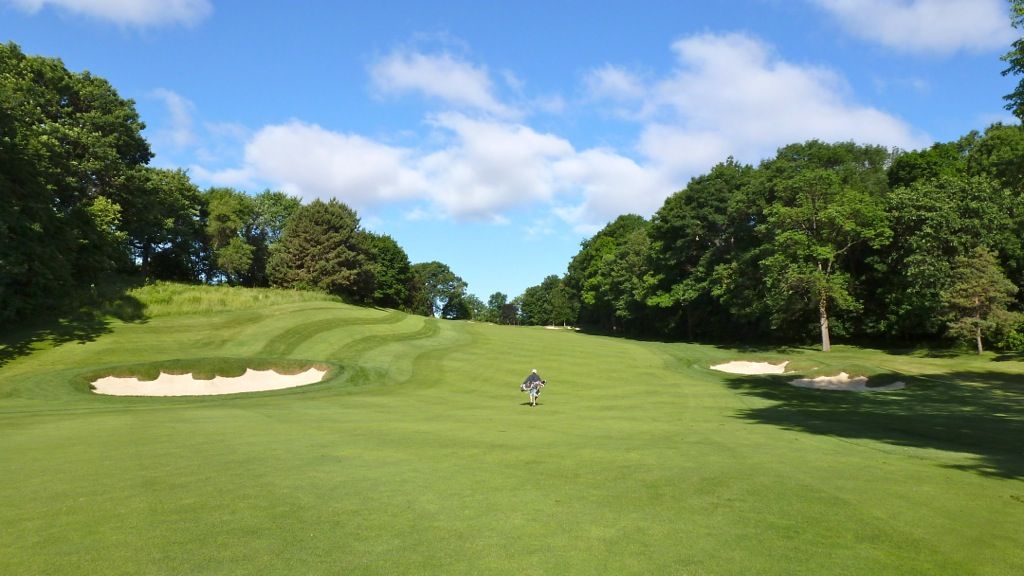
The 5th is a great hole.

The green is straightaway, down the hill in-line with the eye-sore apartment building.
A difficult tee shot. Staggered bunkering flanks the DZ. Tee shots too far right will be blocked-out by trees. Tee shots on the left side of the fairway may be caught by the slope of the fairway and find the left fairway bunker. The fairway runs out around 300 yards.

Left side of the fairway collects into the rough -- makes the tee shot very difficult for shorter hitters:

From 200 yards out, the approach to the green is completely blind, but from 130 yards out the green is completely in view. Like many of the greens at Weston, there is almost no internal contouring but there is significant back-to-front slope. Putts from the back of the green are almost impossible to keep on the green in summer conditioning:
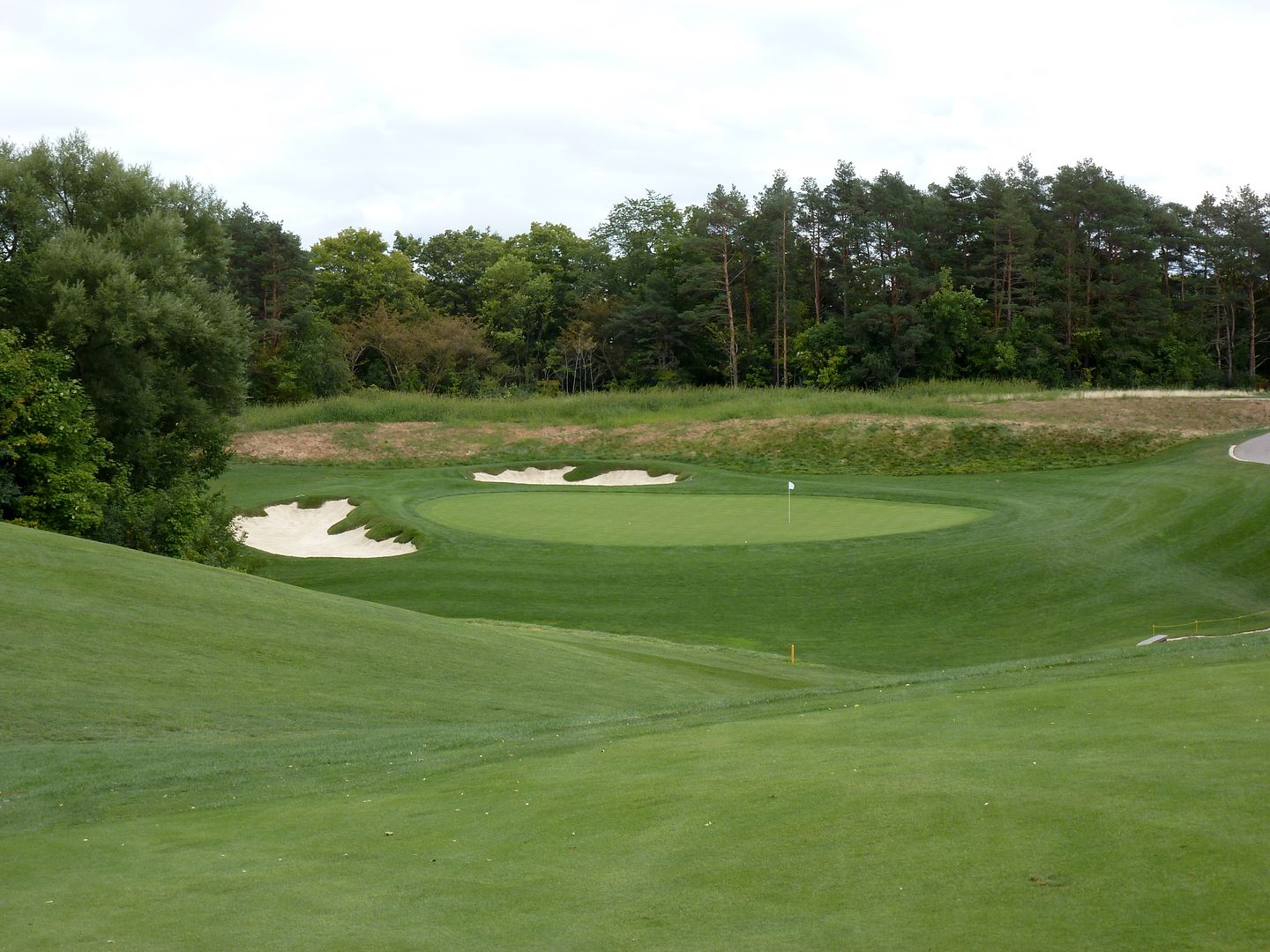
The 7th is a strong par-5 where the hole fights the land from the tee, then uses the slopes in the fairway to create strategy.

There is a certain sameness to the pair of par-3s on the front-nine, but both are good holes. I prefer the 8th, just a wedge or nine-iron, to a green that tilts hard from back-right to front-left and with a spine that creates a difficult back pin position. Interestingly, the putting surface is completely blind from the tee.

The 9th should be a great hole, but trees have destroyed its strategic interest. The land tilts from the right in the landing zone. In theory, shots should be played down the centre to leave an approach in the left side of the fairway, which is protected by a perfectly placed bunker... unfortunately, trees line the right side of the fairway, eliminating the bailout.

The green and fairway short of the green tilt left and away from the tee. A running approach from the left is the play on this long par-4. Golfers that miss their tee shot to the right are left to pitch back into the fairway, but how much more fun would it be to figure out how to keep your ball on this green playing an approach from the right?

The back-nine begins with a short up-and-over par-4. Short tee shots will face a blind approach, while longer tee shots are left with a simple pitch into a very tilted green:

At 235 yards, the 11th can be a monstrous par-3, especially playing into the prevailing wind. Cleverly, the front of the green has been left open and the slope of the land encourages a running approach:

A very good par-5 at the 12th -- reachable in two for some -- but the fairway narrows the longer the tee ball. I would love to see some added width in the lay-up area to encourage some thought on the placement of the golfer's second shot into this angled green:

The 5th and 14th holes share a tee box. These two hole are both long par-4s playing over 440 yards, and are laid out in opposite directions.
While the pair of par-3s on the front-nine offered birdie opportunities, the par-3s on the back-nine are very difficult pars. The 15th requires an all-carry approach of 195 yards to a green with a false-front and a series of rolls that make pin high tee shots a must.
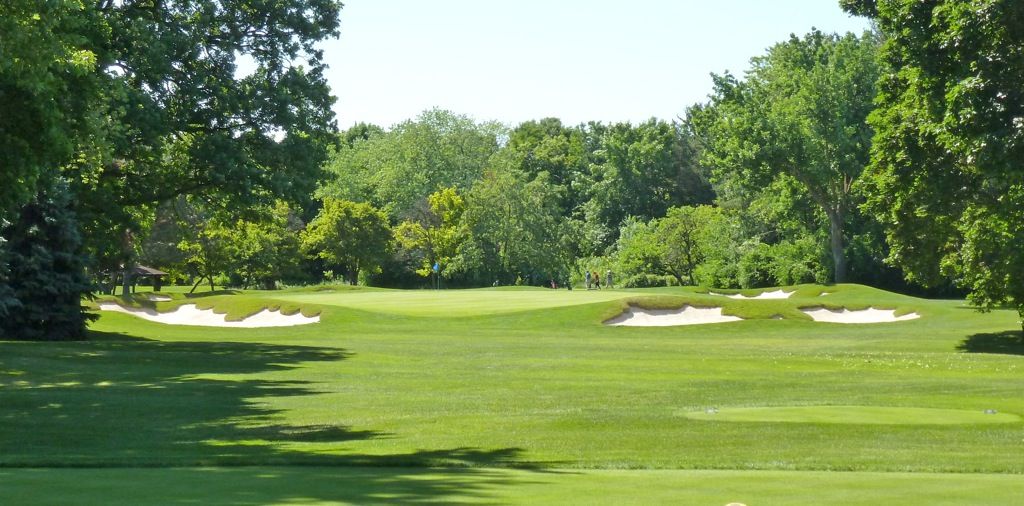
The 16th, usually playing downwind, may be in reach in two if the golfer is able to find the narrow, crowned fairway. Tee shots in the rough will face a difficult lay-up to a flat spot 100 yards from the green protected by a quartet of staggered bunkers.
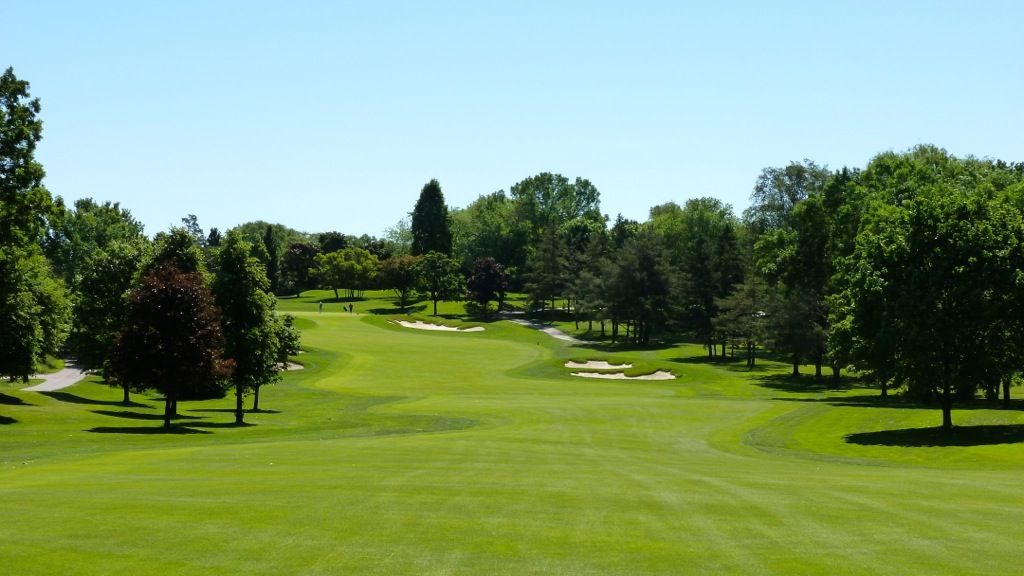
The 17th is something of an awkward par-4 as trees on the left severely intrude on the line of play. Anti-strategic bunkering protects the right, and the theoretical ideal line is somewhere in the trees to the left. This view is the semi-blind approach from the right side of the fairway:

A half-par hole to finish, the 18th is a very demanding 450 yard par-4. While the temptation is to cut the corner on this dogleg left, few golfers have the length to do so. Much like the 9th, this green tilts away from the line of play, and with a long club in hand there is no choice but to play a running approach landing well short of the green.
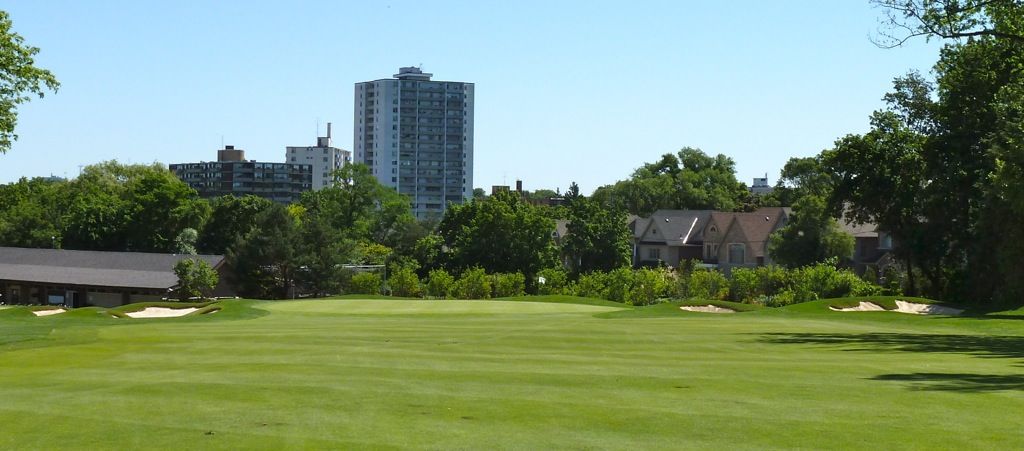

No comments:
Post a Comment